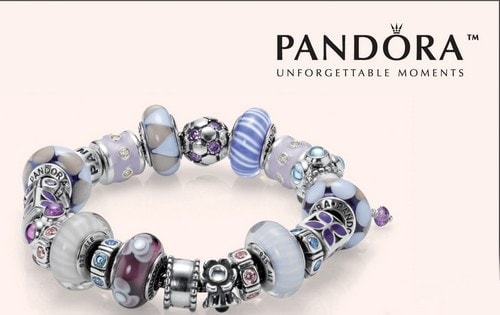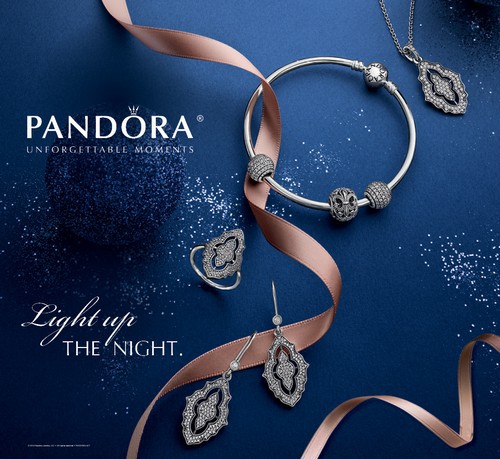The marketing mix of Pandora analyses Pandora’s 4Ps, including product, price, place, and promotions. Pandora is a business mostly associated with the retail and lifestyle industry, specializing in jewelry and stones. It is a retailer as well as a manufacturer of jewelry. This international company is of Danish origin and was founded in 1982 by its founder, Per Enevoldsen. This publicly traded company occupies the third-largest position in the global arena regarding sales figures. It faces competition from several rival brands like-
- Tiffany & Co.
- Cartier
- Mouawad
- Chopard
- Camilla
- Blue Nile
- Harry Winston
- Billig Jewelers Inc
- Signet Jewelers Limited
About Pandora Jewellery
- Type: Jewelry Company
- Industry: Fashion
- Founded: 1982
- Founders: Per Enevoldsen and Winnie Liljeblad
- Headquarters: Copenhagen, Denmark
- Area served: Over 100 countries
- Current CEO: Alexander Shulman
- Number of employees: 27,000
- Major products: Charm bracelets, rings, earrings, necklaces
Table of Contents
Pandora Jewellery Product Strategy
Pandora has created a niche by working diligently and ensuring high-quality products. It offers modern, hand-made jewelry made by a highly skilled workforce and artisans. In 2017 alone, the brand shipped more than 117 million pieces from its crafting facility in Thailand. To retain and improve the brand’s integrity, exceptional quality materials like diamonds, glass, natural gemstones, pearls, artificial stones, leather, 14k gold, and sterling silver are used.
Pandora Jewelry, known for its customizable charm bracelets, designer rings, necklaces, and watches, offers diverse designs and products.
The new Product Mix of Pandora in 2023 is as follows (Source).
- Charm Bracelets: Pandora is perhaps most famous for its customizable charm bracelets. These come in various materials like silver, gold, and leather; customers can choose from a wide array of charms to personalize them.
- Charms and Beads: The brand offers an extensive collection of charms and beads, which are the centerpiece of their charm bracelets. These items come in various designs, themes, and materials, including precious metals and stones.
- Rings: Pandora’s ring collection ranges from simple, elegant designs to more elaborate statement pieces. They offer stacking rings, statement rings, and rings for everyday wear, crafted in metals like sterling silver, gold, and Pandora Rose.
- Earrings: The earring selection includes studs, drops, and hoops in various designs and metals. Customers can find simple, more ornate options for casual or formal wear.
- Necklaces and Pendants: Pandora’s necklaces and pendants range from simple chains to elaborate designs. These can be personalized with various pendants and are available in different lengths and styles.
- Limited Edition and Seasonal Collections: Regularly, Pandora introduces limited edition and seasonal collections, often inspired by current trends, cultural events, or specific themes like love, nature, or travel.
- Collaborations and Special Collections: They occasionally collaborate with designers, celebrities, or brands to create unique, limited-time collections, often generating buzz and attracting different customer segments.
Pandora’s product mix is designed to appeal to a wide range of tastes and preferences, strongly emphasizing personalization and individual expression. Their collections and content are regularly updated to align with fashion trends and customer demands.
Pandora Jewellery Place Strategy
Pandora is a multinational company with its headquarters base in Copenhagen, Denmark. The company started as a family-run shop in Copenhagen and built a production site for jewelry manufacturing in Thailand. It has spread its net far and wide with a product presence in over one hundred countries, occupying six continents.
From Europe, Pandora entered the North American market in 2003. In 2014, at least 90% of its total sales were achieved from the most important markets of the United States and Europe. In 2015, a distribution deal was finalized with China to increase its outlets considerably.
Here’s the place strategy of Pandora.
- Brick-and-Mortar Stores: Pandora has a strong global presence with physical retail stores, often in high-traffic areas like shopping malls and famous shopping streets. These stores offer a personalized shopping experience and allow customers to interact with the products physically.
- Online E-commerce Platform: Recognizing the importance of digital presence, Pandora has a robust e-commerce platform that allows customers to browse and purchase products online. This platform caters to the growing number of consumers who prefer shopping online.
- Authorized Retailers: Pandora products are also available through authorized third-party retailers, including jewelry and department stores. This expands their reach to customers who may not have direct access to Pandora stores.
- Global Market Focus: While headquartered in Denmark, Pandora actively markets and sells its products in over 100 countries across six continents, adapting its strategies to suit different cultural and market preferences.
- Omnichannel Experience: Pandora integrates online and offline channels to provide a seamless customer experience. Customers can check product availability online and opt for in-store pick-up, ensuring flexibility and convenience in their shopping experience.
Pandora Jewellery Pricing Strategy
At the end of the fiscal year 2016, Pandora listed its revenue figures at 20.281 billion DKK and its net income at 6.025 billion DKK. It is a versatile and unique jewelry brand that has targeted an audience of upper-class and upper-middle-class women from urban backgrounds.
Recently, the company has changed its advertising policy and started targeting men as their prospective customers, as men can easily buy gift items for their womenfolk. Pandora has positioned itself as a brand that offers hand-finished, high-quality, and modern jewelry at mid-premium prices.
Pandora’s pricing strategy is a carefully crafted blend of market positioning, brand value, and customer perception, ensuring the brand maintains its status as an affordable luxury in the jewelry market. Here’s an analysis of their approach:
- Premium Affordability: Pandora positions itself as an affordable luxury brand. Their pricing is set to reflect a high-end perception while remaining accessible to a broad consumer base. This approach allows them to attract aspirational buyers seeking quality and style without the steep price tag of traditional luxury jewelry.
- Product Tiering: Pandora employs a tiered pricing structure. Basic charms and pieces are priced lower to attract entry-level buyers, while limited edition and exclusive items are priced higher. This strategy caters to a diverse customer base with varying spending capacities and desires.
- Cost-Based Pricing: The company also considers the cost of materials and production in its pricing strategy. Prices reflect the quality of materials used, such as sterling silver, 14k gold, or Pandora Rose, ensuring customers perceive a direct correlation between price and quality.
- Psychological Pricing: Like many consumer brands, Pandora uses psychological pricing strategies. For example, pricing items just below a whole number (like $49 instead of $50) makes them appear more affordable, encouraging purchases.
- Dynamic and Regional Pricing: Pandora adjusts its prices according to global markets, considering local purchasing power, demand, and economic conditions. This regional pricing strategy ensures market relevance and competitiveness in various international markets.
- Promotional and Seasonal Pricing: The brand frequently uses promotional pricing, such as discounts, seasonal sales, and special offers (like free charms with a specific purchase level). These promotions drive sales, attract new customers, and encourage existing customers to add to their collections.
In summary, Pandora’s pricing strategy is a well-balanced mix of affordability, quality perception, cost-based pricing, psychological tactics, and regional considerations, which fortify their position as a go-to brand for accessible, high-quality jewelry.
Pandora Jewellery Promotion Strategy
Pandora is an established company with excellent brand visibility. The company has adopted several promotional activities to create and maintain its excellent brand awareness in the consumer market. Pandora has been one of the few companies that have depended on word-of-mouth publicity, and it has proved to be an advantageous tool. The brand believes in personalized services and has tried to create an intimate rapport with its customers, ultimately paving the way for its success in the high-end market.
It has launched new ad campaigns that feature strong role models linked with the brand name. Famous personalities like Christiane Amanpour, Donna Karan, and Catherine Zeta-Jones have worn their charms and pendants.
Pandora relies heavily on its print media and advertises via fashion magazines. It has also taken the help of social media platforms because it has recognized its tremendous impact and power over the new generation. Ad campaigns are shown via its policy of viral marketing on YouTube, Facebook, Twitter, and the official website.
Pandora has a supplier policy guiding its procurement and sourcing departments and dealing with suppliers. The company has issued a code of conduct as the guideline and foundation for its ethical standards. The company tagline is Unforgettable Moments. It has issued a Jewellery guide that gives a detailed description of its products, materials used, and how to clean and maintain its luster.
Some Recent Video ads and Print ads for Pandora are:
Liked this post? Check out the complete series on Marketing Mix


Hello Mr.Hitesh Bhasin, can i know the financial performance of Pendora jewellery?